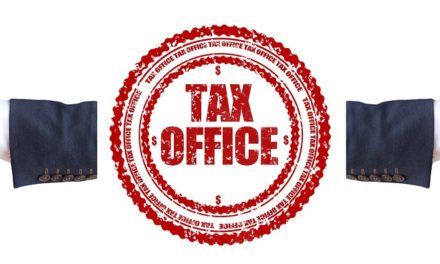“There is no such thing as a “good stock” or a “bad stock”, there are only good and bad investors.” – Joe Granville
“I don’t know enough to short stocks successfully – but I am learning and going to get plenty of practice!” – Jesse Livermore
Short selling a stock is one of the best ways to make massive profits in the stock market. Things can be destroyed more quickly than they can be built. This is particularly true in the stock market. When you short sell, you sell borrowed stocks that you do not own. When the price of the stock falls you then buy it back at a lower price. The profit is the difference between the price you sold the stock at and the price that you buy it back at.
Once this happens, well short sellers make money from short selling by buying the stocks they shorted and returning them to their lender. Short selling has historically been one of the best investment strategies to profit from a falling market.
***
Short selling a stock is essentially the opposite of a long position whereby your profits are made when a stock’s share price goes up.
Short sellers will usually short sell a stock when they think that its share price is overvalued and set to decline. Short positions will increase in value if the market falls and the shares decrease in value.
How does short selling actually work? Short sellers are essentially borrowing someone else’s stock and selling it on the open market with the hope that this company’s share price will fall, thus short sellers can buy back these stocks at a lower price.
Always Use a Stop Loss When Short Selling
When short selling a stock, short sellers must consider what they will do if the stock price rises again. If this happens short sellers are basically forced to cover their short positions in order for them to avoid unlimited losses. That’s the main difference in risk between shorting a stock and buying a stock. When shorting a stock the risk is unlimited. A share price can double and then double again. When you buy a stock the share price can only go to zero. That’s why it-s important to put a stop loss in place when you’re shorting a stock.
You should decide how much you’re prepared to lose in percentage terms when shorting a stock and put your stop-loss in place with your broker at the same time that you place the initial order.
At the time that shorting stocks occurs short sellers are betting that the market price of the shorted stock will go down. This short selling strategy involves shorting stocks when they have high market prices with a low predicted short term future movement.
Specific Strategies to Identify Stocks for Short Selling
The Company Has a Negative Book Value
Specific short selling strategies that short sellers should look for include identifying companies that have a negative book value and shorting their stocks.
When short selling stocks one of the first things short sellers should do is consider whether the company actually has any assets (i.e. cash, inventory, liabilities) or not. If a company does not have sufficient assets then short sellers should short sell the stock. It is likely that if the company has negative assets, they will probably face bankruptcy or restructuring at some stage in the future.
Because short sellers are betting against this company’s share price they will be required to short sell the stock only if it has a high market value when compared to its future predicted short term movement.
The Company Has Negative Cash Flow
When short selling stocks short sellers should also consider the company’s cash flow. If a company is short on cash short sellers will short sell the stock.
One of the tips short sellers can use in order to short sell stocks with negative cash flow is that they have reduced sales and/or an increase in expenses, which then means that their overall profit margins are decreasing. Therefore short sellers can short sell the stock based on what they think the company’s short-term future profits will be.
When short selling stocks short sellers should also look at these companies’ recent earnings per share (EPS). If a company is short on profits short sellers will short sell that
When short selling stocks short sellers need to look at the company’s share price history and see if their current share price has crossed any of those key technical levels. Investors watch key indicators such as the 50 day moving average on a stock price chart. Id a stock prices crosses below its 50 day moving average that can be one indicator that it’s time to short the stock.
Investor Sentiment is Almost 100% Bullish Towards the Company
When short selling stocks short sellers should also look at investor sentiment towards the company’s stock. If the investors are almost 100% bullish that can be an indication that everybody who wants to buy the stock has already bought it. Therefore there’s nowhere left for the stock to go but down. Investor sentiment can be a powerful contrary indicator.
The Company is Constantly on Magazine Covers
When short selling stocks short sellers should also look at whether the company has been featured on any magazine covers. This can be another crucial sentiment indicator. In the year before falling into bankruptcy Enron was feted by the media and appeared on multiple magazine covers.
The Company Has a High P/E Ratio
When short selling stocks short sellers should also look at whether the company has a high P/E ratio or not. A high P/E ratio can be a sign that the company is overvalued.
The Company is Heavily Loss Making and is at Risk of Running Out of Funds
When short selling stocks short sellers should also look at whether the company is making losses. If the Company is heavily loss making it’s reliant on further loans or funds raised from shareholders to stay in business.
Can You Make Money Short Selling Stocks?
Short selling stocks has not been popular recently in times of seemingly unlimited availability of liquidity. The markets are hyper-bullish and only a brave investor would consider shorting stocks even although they are obviously heavily over valued based on any historical measure. That being said, some of the biggest profits in history have been made from shorting stocks. Whether short selling a stock individually or short selling a group of stocks, massive profits will be made in the future from short selling stocks too.
How Does a Short Sale Occur?
When short selling stocks short sellers sell a stock that they do not actually own. For example short sellers does not physically go to the company their shorting and asks for 1000 shares of its stock, but they just sell it as if they had bought them. Short sellers borrow stocks from brokerage firms in order to short sell stocks. Every brokerage will offer facilities to easily short sell all the major stocks on the market. Other instruments such as Contracts for Difference and Single Stock Futures also exist and essentially achieve the same outcome as short selling a stock.
Legendary investor Jesse Livermore shorted the stock market prior to the crash in 1929. He reportedly made more than $100m shorting the market back in 1929. He recognised that a top was in and shorted a basket of stocks on Wall Street. He then sat back and patiently waited for the market to fall. Livermore observed that the most difficult part of being a short seller is sitting and waiting for something to happen. Nobody can get the timing exactly right for short selling a stock. The best you can hope for is to enter your short somewhere close to the high and exit your short close to the bottom. That is considerably easier said than done.
“We Try to Focus on Businesses Where Something is going Wrong”
According to short seller Jim Chanos, who famously made millions from shorting Enron before it fell in to bankruptcy you should seek out businesses with fundamental problems. Not only that but you want to find businesses that are actively trying to hide their problems.
“We try not to short on valuation, though at some price even reasonably good businesses will be good shorts due to limitations of growth. We try to focus on businesses where something is going wrong.
Better yet, we look for companies that are trying — often legally but aggressively — to hide the fact that things are going wrong through their accounting, acquisition policy or other means. Those are our bread-and-butter ideas.” Jim Chanos
Short selling a stock when it’s over-valued is not always your best option. You want to short sell a stock because it has fundamental problems, not just because it is under priced. If there are no fundamental problems with the business then why should the price fall so dramatically? It only makes sense to short sell a stock if there is some fundamental problem that makes it risky and thus overpriced.
“There’s no demarcation line, but short selling tends to be more of a short term trade.” Jim Chanos
Read more about Chanos and his track record as a short seller here
Short selling a stock can be a great strategy to make money if you believe that it’s overvalued and that it’s about to fall. You must do your due diligence and focus on minimizing your risk. If you’re able to do that you should be able to earn massive profits from short selling.











